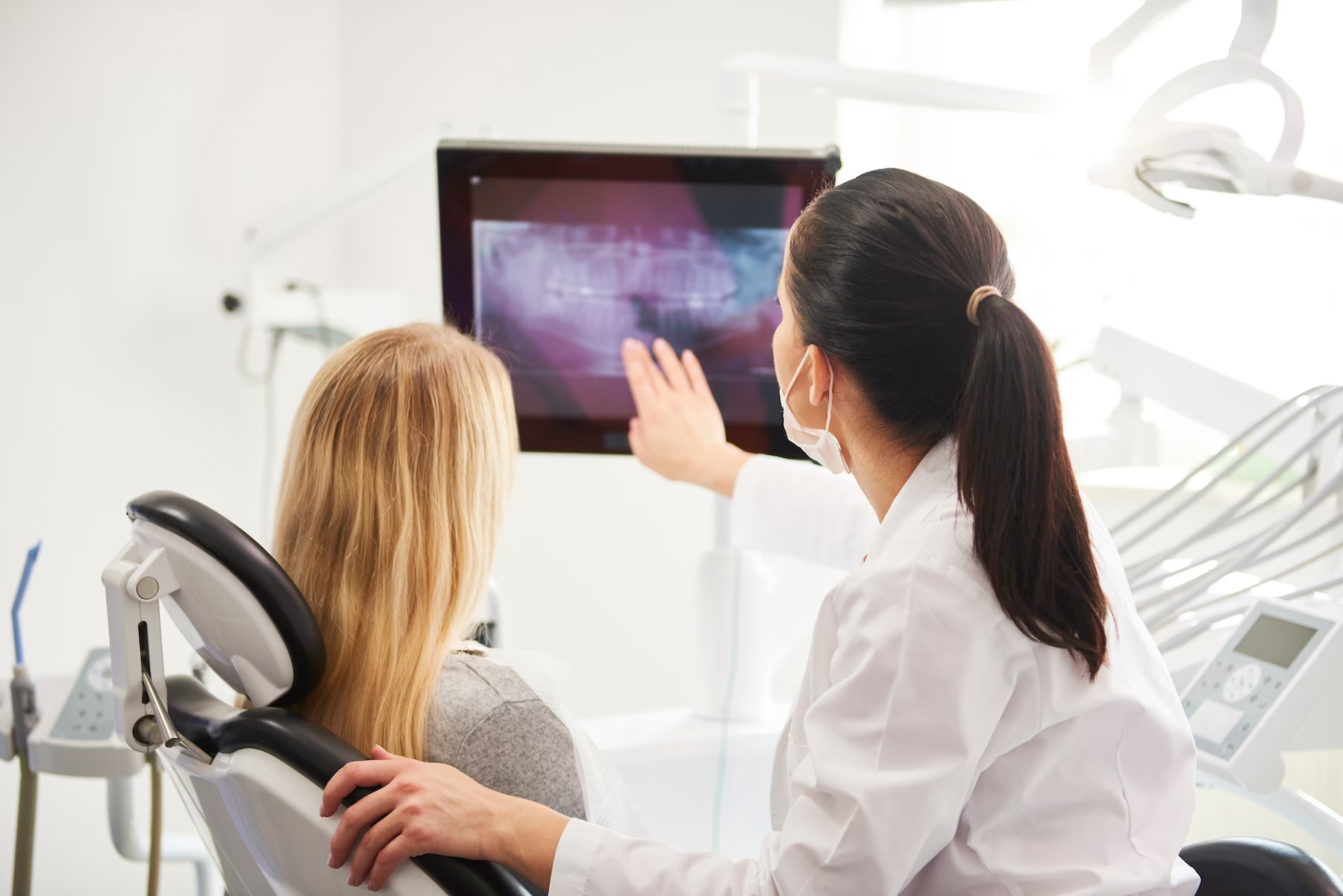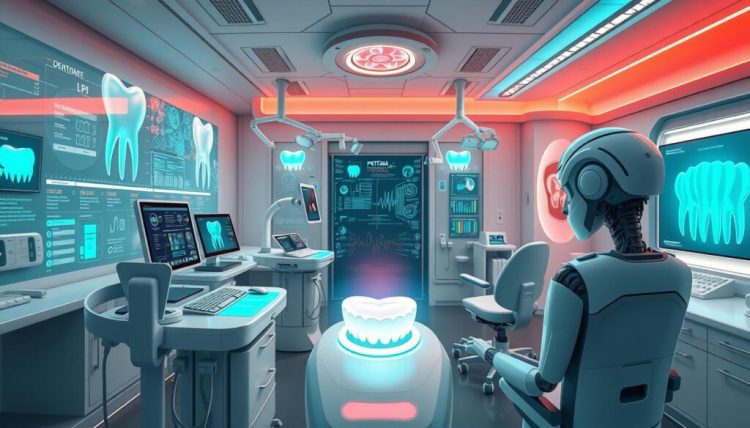In recent years, digital technology has revolutionized nearly every field, and dentistry is no exception. Digital dentistry, or the use of advanced digital tools and techniques in dental care, is reshaping how dental professionals diagnose, plan, and treat patients. From improving accuracy and efficiency to enhancing patient experience and outcomes, digital technology has brought significant advancements to the field. In this article, we will explore how digital dentistry has changed modern dental treatments and its impact on patient care.
What is Digital Dentistry?
Digital dentistry refers to the use of digital technology for various aspects of dental care, including diagnosis, treatment planning, imaging, and the creation of dental restorations such as crowns, bridges, and implants. This integration of digital tools in dentistry offers numerous benefits over traditional methods, enhancing both the efficiency of dental procedures and the overall patient experience.
Key technologies involved in digital dentistry include:
- CAD/CAM (Computer-Aided Design/Computer-Aided Manufacturing): Technology used for designing and creating dental restorations.
- 3D imaging and digital X-rays: For capturing highly detailed, accurate images of the teeth, gums, and bone structure.
- Intraoral scanners: Devices that capture high-resolution, 3D images of the inside of the mouth, eliminating the need for traditional impressions.
- Dental lasers: Used for precision treatments in soft and hard tissues, with minimal discomfort and faster healing.
- Digital impressions: A method of taking impressions digitally, without the use of uncomfortable molding materials.
Let’s dive into the specific ways digital dentistry has transformed dental treatments.
1. Enhanced Accuracy and Precision
One of the most significant advantages of digital dentistry is the improved accuracy and precision of diagnostic tools and treatments. Traditional methods, such as physical impressions or manual measurements, can sometimes lead to inaccuracies due to human error or the limitations of materials.
Digital Impressions and Intraoral Scanners
In traditional dentistry, taking impressions for crowns, bridges, or dentures involved using a gooey, uncomfortable material to mold the shape of a patient’s teeth. These impressions could sometimes distort, leading to ill-fitting restorations and the need for adjustments. With intraoral scanners, dentists can now take highly accurate 3D digital impressions of a patient’s mouth, allowing for more precise measurements and a faster, more comfortable experience.
These digital impressions are also much faster than traditional ones, and the resulting data can be directly sent to a dental laboratory or used for creating custom restorations in-office. This level of precision not only improves the fit of dental work but also enhances the aesthetic outcome, providing patients with better-fitting, more natural-looking results.
Digital X-rays and 3D Imaging
Traditional X-rays often provided limited, two-dimensional images, which could sometimes make it difficult for dentists to identify hidden issues, such as decay between teeth or bone loss. With digital X-rays and 3D imaging, dental professionals can now obtain highly detailed, three-dimensional images of a patient’s mouth, teeth, and underlying bone structure.
These images provide clearer views of dental issues, allowing for more accurate diagnosis and treatment planning. For example, 3D imaging is often used for planning dental implants, as it gives dentists a comprehensive view of the jawbone and surrounding structures, ensuring precise placement of implants.
2. Faster Treatment Times
With the help of digital technologies, dental treatments are becoming faster and more efficient, benefiting both patients and dental professionals. One major area where digital dentistry has made an impact is in the creation of dental restorations.
Same-Day Crowns with CAD/CAM
In the past, getting a crown or other dental restoration typically involved multiple visits to the dentist: one to take impressions, another to create the restoration, and a third for fitting and adjustments. However, with CAD/CAM technology, dentists can now design and create crowns, bridges, veneers, and other restorations in a single visit.
Using a digital scanner to capture the shape of the tooth, CAD software allows the dentist to design the restoration on the spot. The design is then sent to an in-office milling machine, which creates the crown or other restoration. This eliminates the need for temporary restorations and multiple appointments, saving both time and effort for the patient.
Faster Recovery with Laser Dentistry
Laser dentistry has also contributed to faster treatment times and quicker recovery periods for patients. Dental lasers are used for soft and hard tissue procedures, including gum reshaping, cavity removal, and teeth whitening. Lasers are more precise than traditional methods, resulting in less tissue damage, minimal bleeding, and faster healing times.
For example, laser treatment for gum disease can eliminate bacteria and inflamed tissue with minimal discomfort and little to no downtime. Similarly, laser cavity removal involves less drilling, making the procedure quicker and more comfortable.
3. Minimally Invasive Procedures
Digital technology has enabled more conservative, minimally invasive dental treatments. These procedures typically require less cutting and drilling, resulting in less pain, fewer complications, and faster healing for patients.
3D Imaging for Accurate Diagnosis
With 3D imaging, dentists can assess the condition of a tooth or gum issue without the need for invasive tests. This allows for more precise planning of treatments like root canals, dental implants, and extractions, reducing the need for unnecessary procedures.
Laser Treatments
As mentioned earlier, lasers offer precision, which minimizes damage to surrounding healthy tissues. For instance, in the treatment of cavities, lasers can remove decayed portions of the tooth without the need for drills, reducing discomfort and preserving more of the natural tooth structure.
Additionally, laser treatments can be used for gum contouring, oral cancer screenings, and the treatment of cold sores, often requiring no sutures and allowing for faster recovery.

4. Improved Patient Experience
Dental visits can often be stressful and uncomfortable, especially when it involves time-consuming processes like impressions or the use of sharp instruments. Digital dentistry has made these visits more comfortable and convenient for patients.
Comfortable and Quick Digital Impressions
Gone are the days of sitting with a mouthful of gooey impression material. With intraoral scanners, patients no longer have to endure the discomfort of traditional impressions. The digital process is quick and non-invasive, making it more comfortable for patients, especially those who have a sensitive gag reflex or anxiety about dental procedures.
Visualization of Treatment Plans
One of the most exciting advancements of digital dentistry is the ability to show patients a visual representation of their treatment plan. Using 3D imaging, CAD software, and virtual simulations, dentists can now show patients what their teeth will look like after a procedure, such as braces or cosmetic work. This gives patients a clearer understanding of the treatment process, helping them feel more informed and confident in their decisions.
5. Enhanced Precision in Implantology
One of the most impressive advancements in digital dentistry has been in the field of dental implants. Traditional methods of implant placement involved a lot of guesswork and required extensive surgery. However, digital tools have drastically improved the accuracy and precision of implant placement.
3D Guided Implant Surgery
With 3D imaging, dentists can now plan the entire implant procedure in a virtual environment. This allows them to map out the optimal placement of the implant, taking into consideration the jawbone’s density, the surrounding teeth, and the patient’s unique anatomy. Guided implant surgery using digital technology can minimize surgical errors, shorten recovery times, and provide better long-term outcomes.
Computer-Assisted Implant Placement
The advent of computer-assisted implant placement has allowed for the use of robotic systems that help guide the dentist during the procedure. These systems ensure that the implant is placed with the utmost precision, reducing the risk of complications and improving the overall success of the treatment.
6. Better Communication and Collaboration
Digital technology has also enhanced communication between dental professionals and patients, as well as between dental teams and specialists. The use of digital files, such as 3D images, scans, and treatment plans, allows for easy sharing of information across dental offices and even among specialists.
For example, if a patient needs a dental implant, the dentist can easily share the 3D scans and treatment plan with an oral surgeon or implantologist, ensuring that all team members are on the same page. This improves the coordination of care and ensures the patient receives the best possible treatment.
Conclusion
Digital dentistry has brought about a revolution in modern dental care, offering benefits such as enhanced accuracy, faster treatment times, minimally invasive procedures, and improved patient experiences. With advancements like CAD/CAM systems, intraoral scanners, 3D imaging, and laser technology, dental professionals can provide more precise, comfortable, and efficient treatments. As digital tools continue to evolve, the future of dentistry looks even brighter, with the potential for even more innovative solutions that will further improve the quality of care and patient satisfaction. By embracing digital dentistry, both dental professionals and patients are experiencing a new era of dental care that promises to be more effective, convenient, and patient-friendly than ever before.













































Discussion about this post